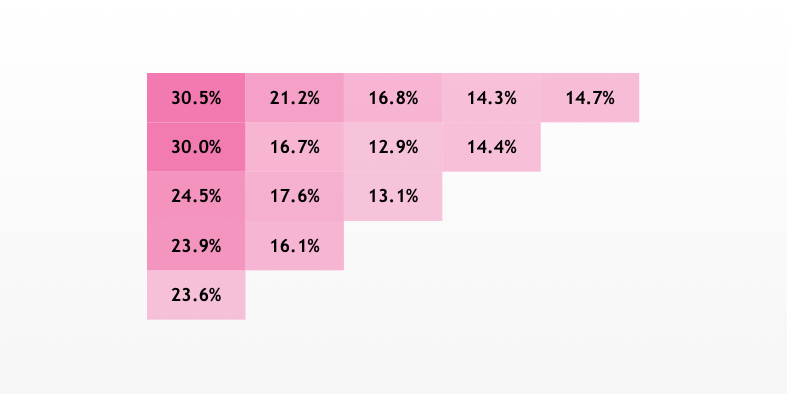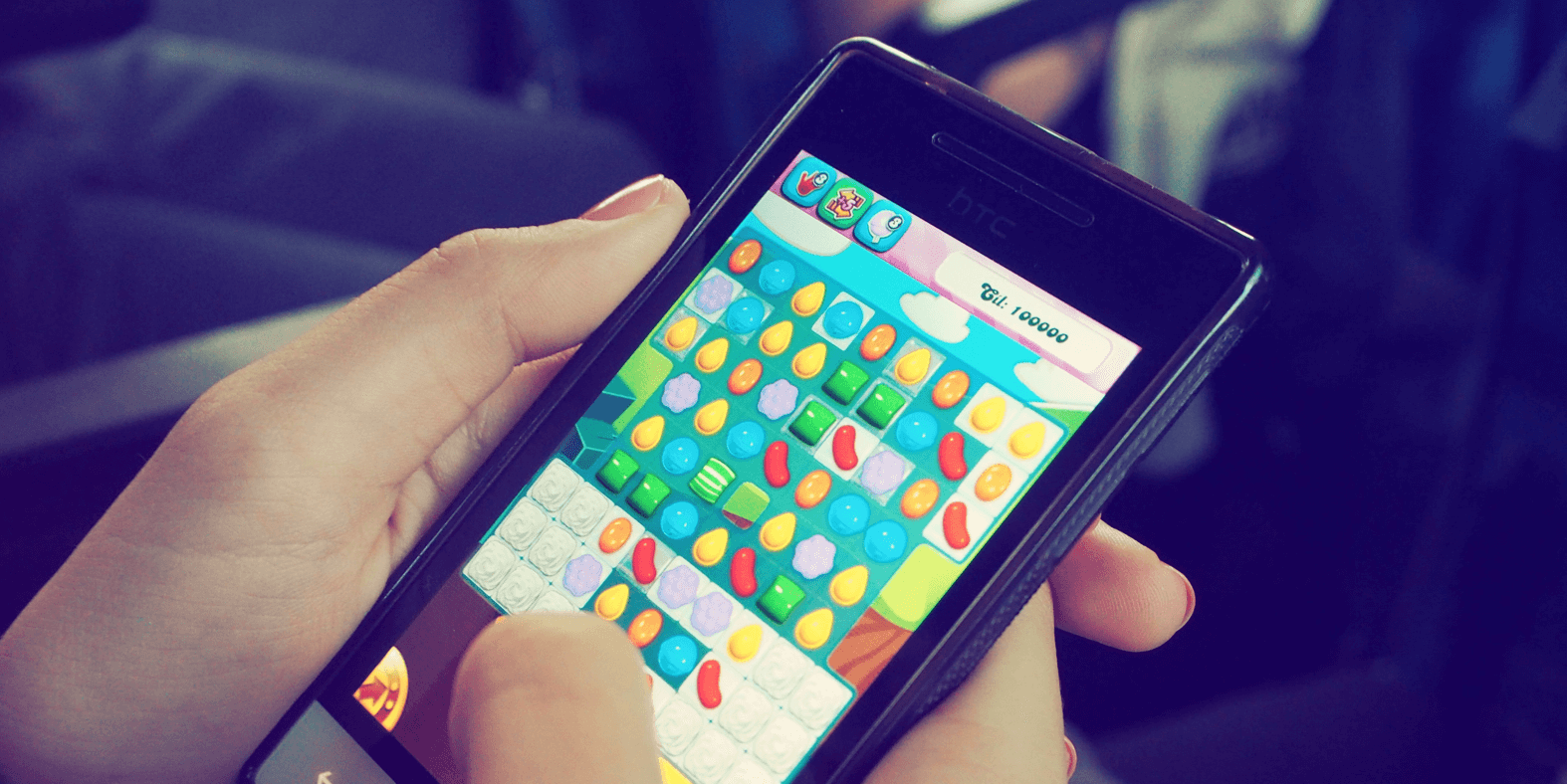Retention and engagement are critical to the performance of a freemium mobile app. While user acquisition is important to grow your mobile app, your app must retain users and monetize them over a long period of time. In comparison to acquisition, retention and engagement are very hard qualities to attain. The failure to retain users is often the reason for a mobile app’s failure.
In this blog post, we explore 4 ways you can improve the retention and engagement metrics of your mobile app.
1. Use Push Notifications to Keep Users Engaged and Improve Retention
Push notifications are a great way to encourage users to return to your mobile app. The most successful mobile apps recognize the huge value of push notifications and deliver a number of messages, reminders and other notifications to keep users engaged.
- Push notifications boost engagement by 88%. Localytics shows that users who enable push notifications launch a mobile app 88% more often than users who do not enable notifications. They also show a significant improvement to retention. This demonstrates that push notifications done right can have a huge uplift to your mobile app.
- Personalize the message of push notifications. You should target your push notifications to each user. If a user starts a task, but does not complete it, use push notifications to encourage them to return. For example, if you have an ecommerce app, you can use push notification to encourage users to complete a purchase if they abandon their cart. Make sure all of your marketing communications are relevant and use demograhpic, geographic or behavioral data to deliver personal messages to your users.
- Optimize the delivery of push notifications. Don’t send push notifications at 3am. Sending a message at the right time will increase the probability that users will act on the message. At very least, you should factor in the user’s location or timezone. But you can also use A/B testing or machine learning to further optimize delivery. If you are sending reminders to complete a task, the time elapsed since starting the task is important. If you are delivering a generic marketing message, the ‘average use time’ is a sensible time to deliver your message*.
- Use deep linking. A deep link can return the user to a specific screen in your mobile app. It is extremely important that push notifications bring users to a relevant part of your app so they can complete the action you want them to. For example, a shopping cart push notification should bring the user directly to the payment flow.
* A small aside. The ‘average use time’ is the average time of day that a user uses your mobile app. A lot of people compute this by adding up the time of day and dividing. This is a flawed calculation, because it does not deal with the cyclic nature of time. For example, if a user signs in at 23.00 and 01.00, this method will calculate the average use time as 12.00 rather than 0.00 (which seems more natural). See this StackOverflow question for more.
2. Use Email Marketing
For many mobile apps, email marketing can help boost engagement and retention. If you know your users’ email addresses, and have permission to email them, ensure you are sending relevant, timely communications to your users.
- Reach users that have turned push notifications off. For users that have turned off push notifications, drip email marketing can be a great way to remarket and encourage users to return to your mobile app. You can also use email to target users that did not respond to a push notification.
- Send complementary messages by email. Push notifications are not suitable for all types of marketing communication. For example, you might wish to send a monthly newsletter to your users. That does not necessarily require a user to perform an action and it might contain a large amount of content. That type of communication would not suit a push notification, but it can be complementary to boosting engagement and retention.
- Show users how to use your app. Email can be a great way to show users how to use your mobile app. If a user has not used one of the key features of your app, send them an email showing them how. Include images and animated GIFs and keep it simple. This type of onboarding email can encourage users to perform an action they would not otherwise consider.
- Use deep linking. Same as with push notifications, use deep linking to bring a user to specific screen in your app. See above.
3. Use Remarketing
Once you acquire a user, there is often a temptation to stop marketing to them. Paid marketing is expensive, but remarketing can help improve retention and engagement. It can also reactivate users that have stopped using or have uninstalled your mobile app.
- Advertise to specific users. Remarketing allows you to target individual users, based on their Android advertising ID or Apple IDFA. These two identifiers uniquely identify your mobile app’s users. Simply upload your list to Facebook or Google, and you can target these users and encourage them to return to your app.
- Reactivate dropped-off users. You could construct a list of users that were active in the past, but have not used your app for 30 days. Marketing to these users could encourage them to return to your app. This targeted approach ensures you are not wasting advertising dollars on users that are already engaged.
- Market to high spenders. Many freemium apps that sell consumable content make the majority of revenue from a small minority of users. Although these users are already responsible for the majority of your revenue, a marketing campaign that targets them can help increase engagement and retention, and secure this revenue long term.
- Do lots of testing. Remarketing campaigns, and targeted marketing campaigns in general, can be tricky to get right. It is difficult to judge how existing users will respond to marketing. Will it increase the time they spend in app? Will it increase revenue from already paying customers? There is no certain answer to these questions, so it is important to do lots of testing and evaluation.
4. Use Gamification
Gamification can help increase engagement levels in your mobile app. This approach rewards a user for performing some positive action, and can help boost engagement and retention. It can also help your app grow organically by referral.
- Gamification cannot be ‘added later’. First off, gamification is not something you can easily add as an extra feature. For gamification to work successfully, it needs to be a core part of your app’s experience.
- Create meaningful rewards. At the heart of most gamification strategies is a points system. But users don’t collect points for the sake of collecting points. The points should have some value, such as the ability to unlock special features. But points can also be valuable as a status symbol. For a mobile game, for example, a highscore leaderboard amongst friends can lead to competitive behavior. And that means greater engagement with your app.
- Reward users for social actions. You should reward users for taking socially positive actions. By ‘socially positive action’ I mean the sharing of your app with friends and participation in the community, for example. If you can build a gamified experience that encourages sharing, you can help boost engagement and improve your K factor.

